ISKCON & Raganuga Bhakti part 2
Mahanidhi Madan Gopal Das
Due to unclear verse translations and purports in Srila Prabhupada’s books like “Nectar of Devotion” and “Sri Chaitanya-caritamrita”, many ISKCON members misunderstand and misrepresent the authorized practice of raganuga-bhakti sadhana.
This post will cite these confusing translations and purports, and give clear explanations of the subject of raganuga-bhakti.
FREEDOM FROM IMPURITY?
Srila Prabhupada’s Nectar of Devotion: “We must always remember, however, that such eagerness to follow in the footsteps of the denizens of Vraja is not possible unless one is freed from material contamination. In following the regulative principles of devotional service, there is a stage called anartha-nivrtti, which means the disappearance of all material contamination.
“Sometimes someone is found imitating such devotional love, but factually he is not freed from anarthas or unwanted habits…When one is actually spontaneously attracted to the loving principles of the gopis, there will be found no trace of any mundane contamination in him.”
Clarification: In Raga-vartma-candrika (1.8) however, Visvanatha Cakravartipada explains that lobha, sacred greed, is not a black-and-white matter, that it is either absolute and complete, or there is none. Lobha is not necessarily a burning, all-consuming passion.
Visvanatha Cakravartipada: “It is described that the devotees on the raga-path gradually progress from the initial surrender to the feet of Sri Guru up to the stage of directly attaining the object of their desires.
‘When the eye is smeared with medicinal ointment, its ability of perception becomes more and more refined, and accordingly it is able to perceive more and more subtle objects. Similarly, according to the degree of the mind’s having become purified by hearing and chanting of My purifying pastimes, all the subtle truths of reality become manifest in the heart of the sadhaka.’ (Srimad Bhagavatam 11.14.26)
“From these words of Sri Krishna, it is known that through sadhana-bhakti the consciousness of the sadhaka becomes more purified every day, and one gradually becomes more and more greedy.”
Srila Prabhupada: “In the stage of devotional service where regulative principles are followed, there is no necessity of discussing this love, for it must develop of itself at a more advanced stage.”
Clarification: This is not stated by Sri Rupa Goswamipada.
Srila Prabhupada: “Therefore, in the beginning, everyone should strictly follow the regulative principles of devotional service, according to the injunctions of the scriptures and the spiritual master. Only after the stage of liberation from material contamination can one actually aspire to follow in the footsteps of the devotees in Vrindavan.”
Clarification: In Bhakti-rasamrita-sindhu (1.2.5), Sri Rupa Goswamipada says there are two kinds of sadhana, practice with the senses by souls that are still conditioned: vaidhi and raganuga. And nowhere it is said that raganuga bhakti is a post graduate state of vaidhi bhakti, or that it cannot be practiced until after liberation.
Visvanatha Cakravartipada states in his Raga Vartma Candrika (2.7): “Then it will be described how one, who has progressed on the path of raganuga-bhakti through the cessation of the evils (anartha-nivrtti), firmness (nistha), taste (ruci), and attachment (asakti) all the way to the attainment of ecstatic love (prema), will directly come to attain his desired object.”
RAGANUGA-BHAKTI BEGINS AT NISHTHA: TRUE OR FALSE?
Different acharyas following Sri Bhaktisiddhanta Sarasvati claim that raganuga-bhakti sadhana commences at the stage of nistha, ruci or even bhava, but there is not a word of evidence for that in the authorized scriptures on the topic, like Bhakti-rasamrita-sindhu or its commentaries, Bhakti Sandarbha, Madhurya Kadambini or Raga Vartma Candrika.
In his book “Sri Guru Parampara- Bhaktisiddhanta Saraswati Thakur, Heir to the Esoteric Life of Kedaranatha Bhaktivinoda”, Tripurari Swami says that “In Bhakti-sara-pradarshini (his commentary on Bhakti-rasamrita-sindhu), Visvanatha Cakravartipada tells us that in order to practice raganuga bhakti one must have attained the stage of nistha.”
CLARIFICATION: This is the verse referred to above quoted from Visvanatha Cakravartipada:
ragatmikaika -nistha -ye -vrajavasi -janadayah
tesham -bhavaptaye -lubdho bhaved -atradhikaravan (Bhakti-rasamrita-sindhu 1.2.291):
“This is the definition of the ragatmika bhakti of the nitya siddha Vrajavasis.”
The words eka nistha (exclusively fixed, loyal) has been mistranslated by Tripurari Swami to refer to the adhikaravan, the jiva-candidate, and have been confused for the high stage of bhakti called nistha.
But this verse refers instead to the nitya siddha role models, the Vrajvasis, and means ‘exclusive fixation’ and not the stage of nistha that sadhakas must go through.
THE SIDDHA DEHA
In his translations of Sri Chaitanya-caritamrita (2.8.229; 2.22.155-158) Srila Prabhupada says to meditate on the siddha deha one needs to be ‘self-realized’, while such a word cannot be found in the original verses.
Narottama Dasa Thakur explains that meditation on the siddha deha is a regular sadhana: “Whatever you think of during your sadhana, you will attain in your siddhi-body. These are the ways of raga marga.” (Prema Bhakti Candrika 57)
“The treasure I covet during my sadhana I will receive in my siddha body. The only difference between the two is being ripe and unripe.” (Prema Bhakti Candrika 56)
This means that the difference between the struggling practitioner and the siddha is only in quantity and not in quality.
Mahanidhi Madan Gopal Das: Quality means way of bhajan for new rag bhakta and siddha is same both do Asta Kaliya Lila smaran and seva in their manjari swarups. But amount of prem and absorption which means quantity is vastly different for siddha and beginner in raga bhakti.
Bhagavad Gita (8.6): “Whatever one contemplates throughout life is what one attains when one leaves the body.”
Srimad Bhagavatam (7.1.27): “The caterpillar imprisoned by a wasp in (its nest on) a wall, and constantly thinking of the latter through intense hate and fear, attains the form of the wasp.”
Bhakti-rasamrita-sindhu (1.2.295): “A person who desires loving attraction to His beloved Sri Krishna in Vraja must serve in allegiance to the Vrajvasis, both in the current practitioner’s body as well as in the spiritual, mentally conceived body, which is fit for serving Sri Krishna, seva -sadhaka -rupena -siddha -rupena -catra -hi.”
Visvanatha Cakravartipada tika: “Mental service must be rendered in the spiritual body, siddha-deha, in allegiance to Sri Radha, Lalita, Visakha-sakhi, Sri Rupa Manjari and service in the current physical body must be rendered in allegiance to Vraja-people like Sri Rupa and Sanatana.
Srila Prabhupada translates Sri Chaitanya-caritamrita (2.22.154-155) as follows: “There are two processes by which one may execute this raganuga bhakti: external and internal. When self-realized, the advanced devotee externally remains like a neophyte and executes all the shāstric injunctions, especially those concerning hearing and chanting. But within his mind, in his original, purified, self-realized position, he serves Krishna in Vrindavan day and night.”
Clarification: The actual Bengali verse of Sri Chaitanya-caritamrita (2..22.154-155) says: “There are two kinds of devotion in practice — external and internal. In the external practitioner’s body devotional practices of hearing and chanting Krishna’s glories are performed, and internally, in the mentally conceived spiritual body, one renders mental service to Krishna in Vraja day and night.”
The term ‘self-realized’ mentioned in Srila Prabhupada’s translation is not in the original Bengali sloka. Besides, it is a bit too extreme for a description of raganuga-bhakti sadhana because this verse appears in the sadhana bhakti chapter of Bhakti-rasamrita-sindhu. Nevertheless, one indeed needs to be fairly advanced to meditate on one’s siddha deha.
In Bhakti Sandarbha (276), Sri Jiva Goswamipada says, “Smaranam requires a pure heart, smaranam -tu shuddha -antah -karanatam -apeksate.”
All the elaborations of Visvanatha Cakravartipada in Madhurya Kadambini on how far up anarthas persist (up to the stage of prema) are nicely summarized by Sri Rupa Goswamipada in a single verse of Bhakti-rasamrita-sindhu (2.1.276):
“Sadhakas who have developed rati [bhava] for Krishna but have not completely extinguished the anarthas are qualified to see Krishna directly.”
Clarification: This verse obviously refers to subtle anarthas. It also dismisses claims that one is unqualified to meditate, what to speak of realize the spiritual body, while anarthas are still there. [content courtesy Sri Advaita Dasji]
Raganuga-bhakti ki jai! Jai Jai Sri Radhe!

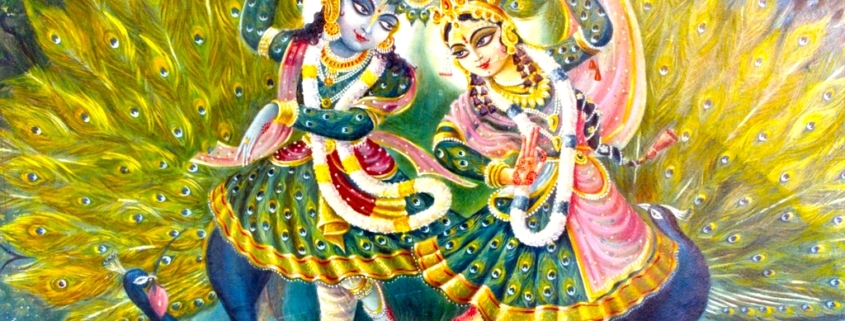
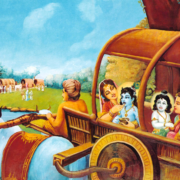

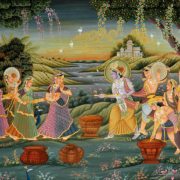
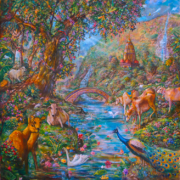
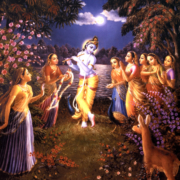
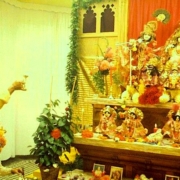
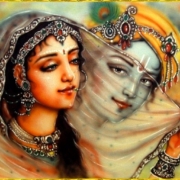


Leave a Reply
Want to join the discussion?Feel free to contribute!